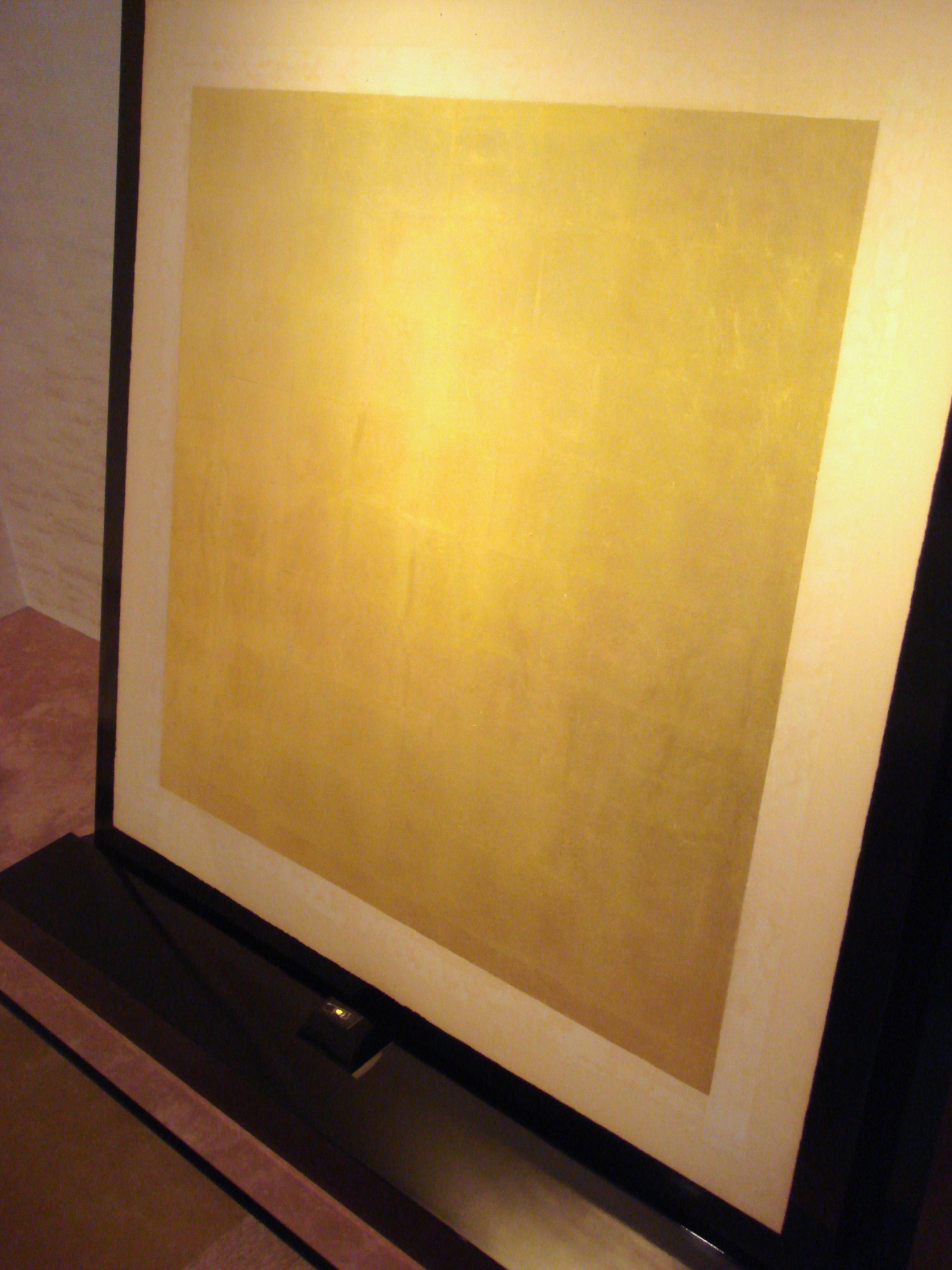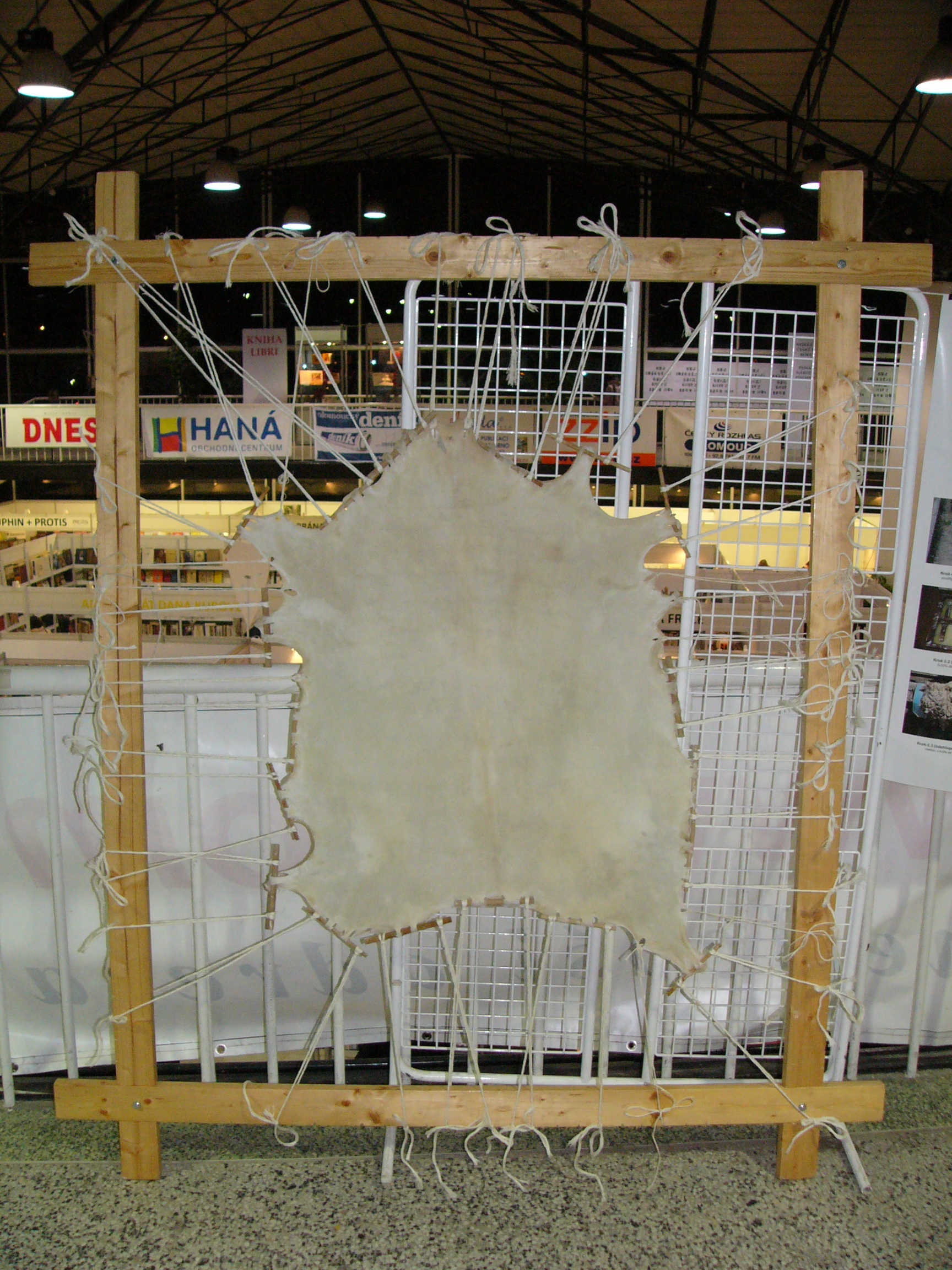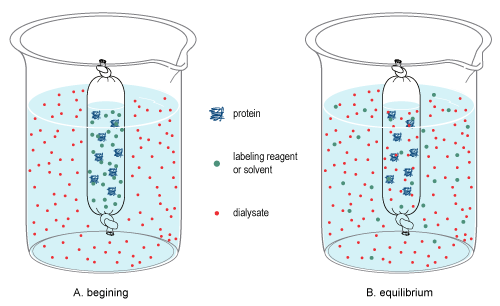|
Purple Of Cassius
Purple of Cassius is a purple pigment formed by the reaction of gold salts with tin(II) chloride. It has been used to impart glass with a red coloration (see '' cranberry glass''), as well as to determine the presence of gold as a chemical test. Generally, the preparation of this material involves gold being dissolved in aqua regia, then reacted with a solution of tin(II) chloride. The tin(II) chloride reduces the chloroauric acid from the dissolution of gold in aqua regia to a colloid of elemental gold supported on tin dioxide to give a purple precipitate or coloration. When used as a test, the intensity of the color correlates with the concentration of gold present. This test was first observed and refined by a German physician and alchemist, Andreas Cassius (1600–1676) of Hamburg, in 1665. Berzelius later made a detailed study of the purple of Cassius. The colour also attracted attention from Michael Faraday. Richard Adolf Zsigmondy, who earned the 1926 Nobel Prize f ... [...More Info...] [...Related Items...] OR: [Wikipedia] [Google] [Baidu] |
Phosphorus
Phosphorus is a chemical element; it has Chemical symbol, symbol P and atomic number 15. All elemental forms of phosphorus are highly Reactivity (chemistry), reactive and are therefore never found in nature. They can nevertheless be prepared artificially, the two most common allotropes being white phosphorus and red phosphorus. With as its only stable isotope, phosphorus has an occurrence in Earth's crust of about 0.1%, generally as phosphate rock. A member of the pnictogen family, phosphorus readily forms a wide variety of organic compound, organic and inorganic compound, inorganic compounds, with as its main oxidation states +5, +3 and −3. The isolation of white phosphorus in 1669 by Hennig Brand marked the scientific community's first discovery since Antiquity of an element. The name phosphorus is a reference to the Phosphorus (morning star), god of the Morning star in Greek mythology, inspired by the faint glow of white phosphorus when exposed to oxygen. This property is ... [...More Info...] [...Related Items...] OR: [Wikipedia] [Google] [Baidu] |
Pigments
A pigment is a powder used to add or alter color or change visual appearance. Pigments are completely or nearly solubility, insoluble and reactivity (chemistry), chemically unreactive in water or another medium; in contrast, dyes are colored substances which are soluble or go into solution at some stage in their use. Dyes are often organic compounds whereas pigments are often inorganic compound, inorganic. Pigments of prehistoric and historic value include ochre, charcoal, and lapis lazuli. Economic impact In 2006, around 7.4 million tons of inorganic chemistry, inorganic, organic chemistry, organic, and special pigments were marketed worldwide. According to an April 2018 report by ''Bloomberg Businessweek'', the estimated value of the pigment industry globally is $30 billion. The value of titanium dioxide – used to enhance the white brightness of many products – was placed at $13.2 billion per year, while the color Ferrari red is valued at $300 million each yea ... [...More Info...] [...Related Items...] OR: [Wikipedia] [Google] [Baidu] |
Gold
Gold is a chemical element; it has chemical symbol Au (from Latin ) and atomic number 79. In its pure form, it is a brightness, bright, slightly orange-yellow, dense, soft, malleable, and ductile metal. Chemically, gold is a transition metal, a group 11 element, and one of the noble metals. It is one of the least reactivity (chemistry), reactive chemical elements, being the second-lowest in the reactivity series. It is solid under standard temperature and pressure, standard conditions. Gold often occurs in free elemental (native state (metallurgy), native state), as gold nugget, nuggets or grains, in rock (geology), rocks, vein (geology), veins, and alluvial deposits. It occurs in a solid solution series with the native element silver (as in electrum), naturally alloyed with other metals like copper and palladium, and mineral inclusions such as within pyrite. Less commonly, it occurs in minerals as gold compounds, often with tellurium (gold tellurides). Gold is resistant to ... [...More Info...] [...Related Items...] OR: [Wikipedia] [Google] [Baidu] |
Chemical Tests
A chemical substance is a unique form of matter with constant chemical composition and characteristic properties. Chemical substances may take the form of a single element or chemical compounds. If two or more chemical substances can be combined without reacting, they may form a chemical mixture. If a mixture is separated to isolate one chemical substance to a desired degree, the resulting substance is said to be chemically pure. Chemical substances can exist in several different physical states or phases (e.g. solids, liquids, gases, or plasma) without changing their chemical composition. Substances transition between these phases of matter in response to changes in temperature or pressure. Some chemical substances can be combined or converted into new substances by means of chemical reactions. Chemicals that do not possess this ability are said to be inert. Pure water is an example of a chemical substance, with a constant composition of two hydrogen atoms bonded to a ... [...More Info...] [...Related Items...] OR: [Wikipedia] [Google] [Baidu] |
Gold Bulletin
Gold is a chemical element; it has chemical symbol Au (from Latin ) and atomic number 79. In its pure form, it is a bright, slightly orange-yellow, dense, soft, malleable, and ductile metal. Chemically, gold is a transition metal, a group 11 element, and one of the noble metals. It is one of the least reactive chemical elements, being the second-lowest in the reactivity series. It is solid under standard conditions. Gold often occurs in free elemental (native state), as nuggets or grains, in rocks, veins, and alluvial deposits. It occurs in a solid solution series with the native element silver (as in electrum), naturally alloyed with other metals like copper and palladium, and mineral inclusions such as within pyrite. Less commonly, it occurs in minerals as gold compounds, often with tellurium (gold tellurides). Gold is resistant to most acids, though it does dissolve in aqua regia (a mixture of nitric acid and hydrochloric acid), forming a soluble tetrachloroaurate anion. ... [...More Info...] [...Related Items...] OR: [Wikipedia] [Google] [Baidu] |
German Wikipedia
The German Wikipedia () is the German-language edition of Wikipedia, a free and publicly editable online encyclopedia. Founded on 16 March 2001, it is the second-oldest Wikipedia edition (after the English Wikipedia). It has articles, making it the -largest edition of Wikipedia by number of articles , behind the English Wikipedia and the mostly bot-generated Cebuano Wikipedia.meta:List of Wikipedias, Wikimedia list of Wikipedias and their statistics. Retrieved 5 January 2025.] Alternative language Wikipedias, 16 March 2001List of Wikipedias/Table meta.wikimedia.org, Statistics It has the second-largest number of edits and of active users behind the English Wikipedia. On 7 November 2011, the German Wikipedia became the second edition of Wikipedia, after the English edition, to exceed 100&nbs ... [...More Info...] [...Related Items...] OR: [Wikipedia] [Google] [Baidu] |
Parchment Membrane
Parchment is a writing material made from specially prepared untanned skins of animals—primarily sheep, calves and goats. It has been used as a writing medium in West Asia and Europe for more than two millennia. By AD 400 most literature in these regions that was intended for preservation began to be transferred from papyrus to parchment. ''Vellum'' is a finer-quality parchment made from the skins of young animals such as lambs and young calves. The generic term ''animal membrane'' is sometimes used by libraries and museums that wish to avoid distinguishing between parchment and vellum. Parchment and vellum Today the term ''parchment'' is often used in non-technical contexts to refer to any animal skin, particularly goat, sheep or cow, that has been scraped or dried under tension. The term originally referred only to the skin of sheep and, occasionally, goats. The equivalent material made from calfskin, which was of finer quality, was known as ''vellum'' (from the Old Fren ... [...More Info...] [...Related Items...] OR: [Wikipedia] [Google] [Baidu] |
Colloidal Suspensions
A colloid is a mixture in which one substance consisting of microscopically dispersed insoluble particles is suspended throughout another substance. Some definitions specify that the particles must be dispersed in a liquid, while others extend the definition to include substances like aerosols and gels. The term colloidal suspension refers unambiguously to the overall mixture (although a narrower sense of the word ''suspension'' is distinguished from colloids by larger particle size). A colloid has a dispersed phase (the suspended particles) and a continuous phase (the medium of suspension). The dispersed phase particles have a diameter of approximately 1 nanometre to 1 micrometre. Some colloids are translucent because of the Tyndall effect, which is the scattering of light by particles in the colloid. Other colloids may be opaque or have a slight color. Colloidal suspensions are the subject of interface and colloid science. This field of study began in 1845 by Francesco Selm ... [...More Info...] [...Related Items...] OR: [Wikipedia] [Google] [Baidu] |
Dialysis (chemistry)
In chemistry, dialysis is the process of separating molecules in solution by the difference in their rates of diffusion through a semipermeable membrane, such as dialysis tubing. Dialysis is a common laboratory technique that operates on the same principle as medical dialysis. In the context of life science research, the most common application of dialysis is for the removal of unwanted small molecules such as salts, reducing agents, or dyes from larger macromolecules such as proteins, DNA, or polysaccharides. Dialysis is also commonly used for buffer exchange and drug binding studies. The concept of dialysis was introduced in 1861 by the Scottish chemist Thomas Graham. He used this technique to separate sucrose (small molecule) and gum Arabic solutes (large molecule) in aqueous solution. He called the diffusible solutes crystalloids and those that would not pass the membrane colloids. From this concept dialysis can be defined as a spontaneous separation process of suspended ... [...More Info...] [...Related Items...] OR: [Wikipedia] [Google] [Baidu] |
Thomas Graham (chemist)
Thomas Graham (20 December 1805 – 11 September 1869) was a Scottish chemist known for his pioneering work in dialysis and the diffusion of gases. He is regarded as one of the founders of colloid chemistry. Life Graham was born in Glasgow, Scotland and was educated at the High School of Glasgow. Graham's father was a successful textile manufacturer, and wanted his son to enter into the Church of Scotland. Instead, defying his father's wishes, Graham became a student at the University of Glasgow in 1819. There he developed a strong interest in chemistry, studying under Professor Thomas Thomson, who was impressed and influenced by the young man. He left the university after receiving his MA in 1824. He later studied medicine at the University of Edinburgh and then briefly taught chemistry at the Glasgow University Portland Street Medical School. In 1828 he was elected a Fellow of the Royal Society of Edinburgh, his proposer was Edward Turner. He won the Society's Keith Med ... [...More Info...] [...Related Items...] OR: [Wikipedia] [Google] [Baidu] |







